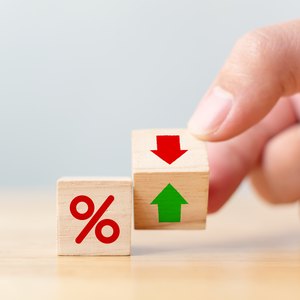
Following the prime rate is not something most people do every day. However, changes in the prime rate affect the finances of everyone. Credit card providers use the prime rate as a starting point to determine how much interest you pay. Mortgage lenders also base their rates on the prime rate.
Learn what the prime rate is and why you need to know where it's headed.
What Is the Prime Interest Rate?
The prime rate is the interest rate that commercial banks charge their most creditworthy customers, like large corporations and high-net-worth individuals. These large companies are perceived as having the lowest risk of default. Banks charge higher interest rates to customers who have a greater probability of default. Borrowers who have a credit score above 660 are more likely to receive lower interest rates.
Each bank sets its own prime rate. There is no single, nationwide prime rate. If you see a reference to “the prime rate,” that usually means it's an average rate of several financial institutions.
The prime rate quoted most often is the one published daily by The Wall Street Journal. The WSJ prime rate is a 70 percent composite of the 10 largest banks in the U.S. and is considered the official prime rate used to set interest rates on other loans.
Read More: What Are Some Risks of Variable Rate Loans?
How Is the Prime Interest Rate Determined?
The federal funds rate is the starting point for the prime rate. The federal funds rate is the interest rate that banks charge to lend overnight funds to each other for maintaining their reserve requirements.
The Federal Open Market Committee, which usually meets eight times a year, sets a target federal funds rate. The Federal Reserve lowers the target rate to stimulate the economy or raises the rate to slow down an overheated economy and reduce inflation.
Note that the FOMC only sets a “target” for the federal funds rate. It does not determine the daily federal funds rate. Market forces of economic supply and demand determine the actual federal funds rate.
Generally, the prime rate is 3 percent above the current federal funds rate and moves up or down with fluctuations in the federal funds rate.
Read More: How Do Banks Change Rates Based on Prime Rate?
How Does the Prime Rate Affect You?
Lenders use the prime rate as a starting point to set rates on other loans such as credit cards, personal loans, adjustable-rate mortgages and home equity lines of credit.
For example, the interest rate on your credit card is probably set by a spread over the prime rate. Your credit card provider may charge you an interest rate spread of 14 percent over the prime rate. If the current prime rate is 4 percent, then the interest rate on your credit card will be 18 percent. It will fluctuate over time as rates change.
Financial products with fixed rates, such as fixed-rate mortgages and auto loans, will not be affected by changes in the prime rate. The fixed rate may be set at a spread over the prime rate when you first take out the loan, but it will not fluctuate with changes in the prime rate after that.
Read More: HELOC vs. 30-Year Fixed
Staying alert to changes in the prime rate can help you make financial decisions. Suppose you have an adjustable-rate mortgage. How do you decide when to refinance this mortgage and convert to a fixed rate? Is the Federal Reserve Bank raising the federal funds rate? How will this affect mortgage rates?
These are all questions that influence your financial decisions. Therefore, it makes sense to pay attention to the actions that the Federal Reserve Bank is taking and the resulting changes in the prime rate.
References
Writer Bio
James Woodruff has been a management consultant to more than 1,000 small businesses. As a senior management consultant and owner, he used his technical expertise to conduct an analysis of a company's operational, financial and business management issues. James has been writing business and finance related topics for work.chron, bizfluent.com, smallbusiness.chron.com and e-commerce websites since 2007. He graduated from Georgia Tech with a Bachelor of Mechanical Engineering and received an MBA from Columbia University.

